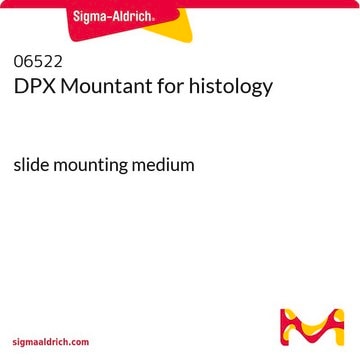247642
Xylenes
ACS reagent, ≥98.5% xylenes + ethylbenzene basis
Synonym(s):
Xylene mixture of isomers
About This Item
Recommended Products
grade
ACS reagent
Quality Level
vapor density
3.7 (vs air)
vapor pressure
18 mmHg ( 37.7 °C)
Assay
≥98.5% xylenes + ethylbenzene basis
form
liquid
composition
C6H5CH2CH3, ≤25%
expl. lim.
7 %
impurities
H2SO4, passes test
≤0.003% S compounds
≤0.05% water
evapn. residue
≤0.002%
color
APHA: ≤10
refractive index
n20/D 1.497 (lit.)
bp
137-140 °C (lit.)
mp
-34 °C
density
0.86 g/mL at 25 °C (lit.)
SMILES string
Cc1ccc(C)cc1.Cc2cccc(C)c2.Cc3ccccc3C
InChI
1S/3C8H10/c1-7-3-5-8(2)6-4-7;1-7-4-3-5-8(2)6-7;1-7-5-3-4-6-8(7)2/h3*3-6H,1-2H3
InChI key
MVZVDAGWAAZJPE-UHFFFAOYSA-N
Looking for similar products? Visit Product Comparison Guide
General description
Application
- In the tetraphosphine/palladium-catalyzed Suzuki cross-coupling with sterically hindered aryl halides and arylboronic acids to synthesize tri-ortho-substituted biaryl adducts.
- For the N-alkylation of amines or ammonia with alcohols to synthesize N-alkyl amines.
- To synthesize aromatic polyimides by reacting unsymmetric phosphinated diamines and dianhydrides via solution polymerization.
Packaging
Signal Word
Danger
Hazard Statements
Precautionary Statements
Hazard Classifications
Acute Tox. 4 Dermal - Acute Tox. 4 Inhalation - Aquatic Chronic 3 - Asp. Tox. 1 - Eye Irrit. 2 - Flam. Liq. 3 - Skin Irrit. 2 - STOT RE 2 - STOT RE 2 Inhalation - STOT SE 3
Target Organs
Central nervous system,Liver,Kidney, hearing organs, Respiratory system
Storage Class Code
3 - Flammable liquids
WGK
WGK 2
Flash Point(F)
77.0 °F - closed cup
Flash Point(C)
25 °C - closed cup
Certificates of Analysis (COA)
Search for Certificates of Analysis (COA) by entering the products Lot/Batch Number. Lot and Batch Numbers can be found on a product’s label following the words ‘Lot’ or ‘Batch’.
Already Own This Product?
Find documentation for the products that you have recently purchased in the Document Library.
Customers Also Viewed
Our team of scientists has experience in all areas of research including Life Science, Material Science, Chemical Synthesis, Chromatography, Analytical and many others.
Contact Technical Service








